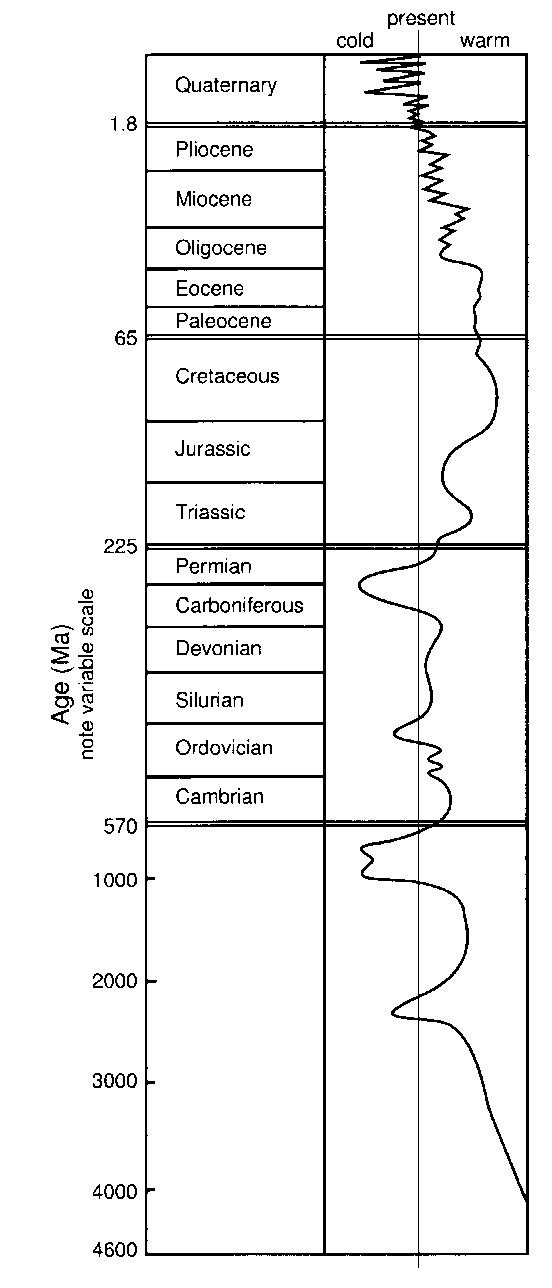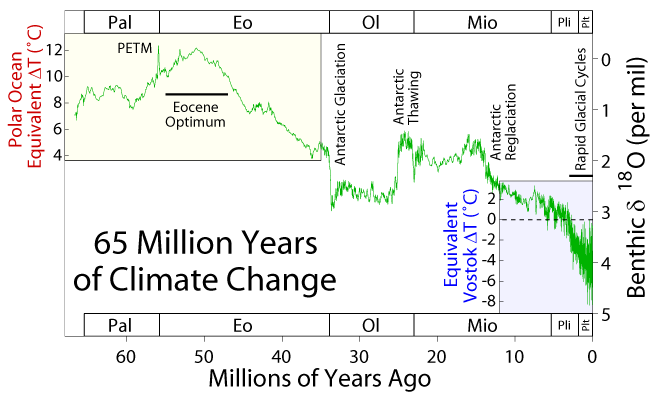0
Yesterday’s chart showed the earth’s temperature for the last 4600 million years. That’s 4.6 billion years ago to the present.
Today, I have a chart showing deep ocean temperatures for only the last 100 million years.

Deep Ocean Temperatures During the Last 100 Million Years
The above image comes from a wonderful online book called Global Climate Change Student Guide. The link takes you to the chapter called Palaeoclimatic Change, Section: Cenozoic Climates. If you click on the “section 5.3” link on that page, you’ll see the above chart.
I am investigating earth’s climate history to see if the earth’s recent global warming is something alarming compared to the earth’s climate history. From what I see, the earth’s temperature seems to have been going downward. Therefore, I would imagine that the recent rise in temperature could be temporary.
In my hypnosis sessions, described in my book When We Were Gods, I mentioned earth changes. Therefore, I’m interested in discovering whether recent earth changes are normal or abnormal for our planet.
Continue reading


